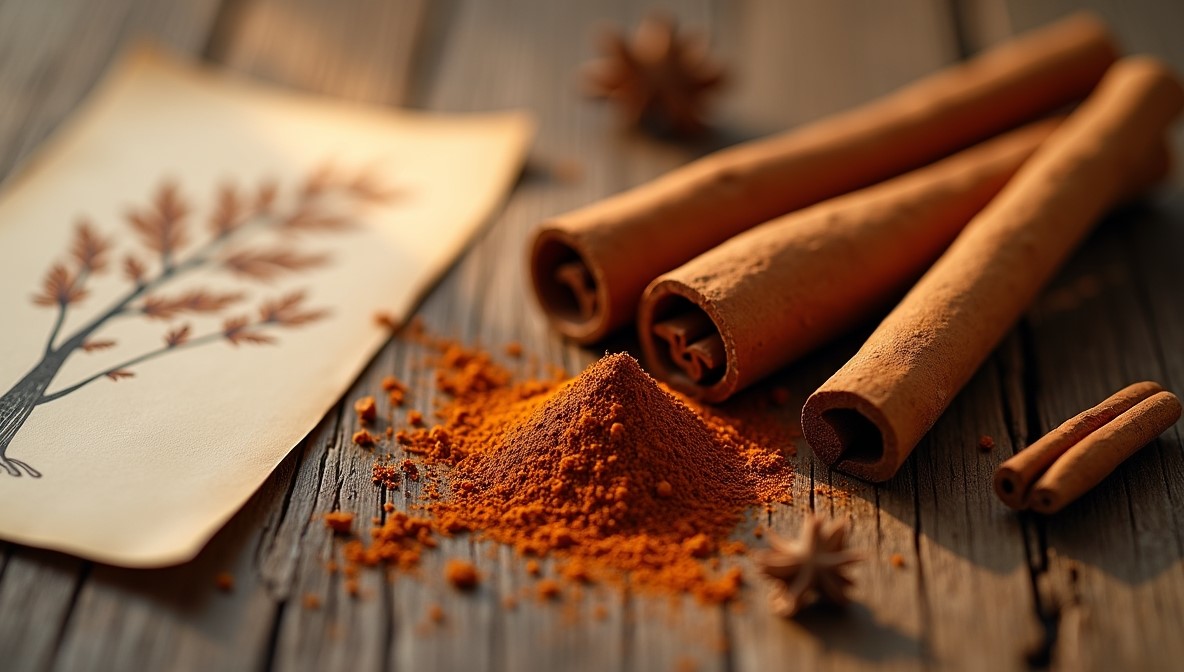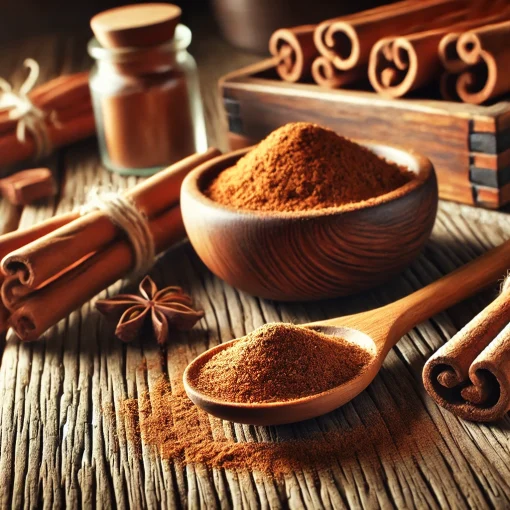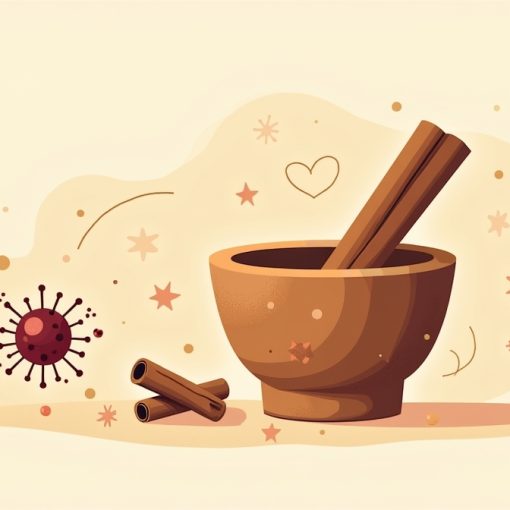Cinnamon has been valued for centuries, not only for its rich flavor but also for its potential health benefits. Modern research has taken a closer look at its properties, leading to numerous studies on its impact on blood sugar regulation, brain function, inflammation, and more. Here’s what science has uncovered.
1. The Role of Cinnamon in Blood Sugar Control
One of the most researched areas is its effect on blood sugar levels. Several studies suggest that cinnamon may improve insulin sensitivity and help regulate glucose levels.
- Improved Insulin Sensitivity – Research published in the Diabetes Care Journal found that consuming cinnamon extract helped improve insulin sensitivity in individuals with type 2 diabetes. This could make it beneficial for those looking to manage their blood sugar naturally.
- Lower Fasting Blood Sugar Levels – A meta-analysis of clinical trials indicated that cinnamon supplementation reduced fasting blood glucose levels in diabetic patients.
- Glycemic Control Over Time – Some long-term studies suggest that daily intake may support better glycemic control, although results vary depending on the dosage and form used.
2. Cinnamon’s Impact on Brain Health
Cinnamon contains compounds that may offer neuroprotective effects, potentially benefiting cognitive function and reducing the risk of neurological diseases.
- Memory and Learning Enhancement – A study in The Journal of Neuroimmune Pharmacology showed that cinnamon compounds helped improve memory function in animal models by reducing oxidative stress in the brain.
- Potential for Alzheimer’s Prevention – Researchers have examined cinnamaldehyde and epicatechin, two key components in cinnamon, for their ability to prevent the buildup of tau protein tangles, a hallmark of Alzheimer’s disease.
- Neuroinflammation Reduction – Chronic inflammation contributes to cognitive decline. Cinnamon’s anti-inflammatory properties may help protect brain cells from damage.
3. Anti-Inflammatory and Antioxidant Properties
Inflammation plays a role in many chronic diseases, including arthritis, heart disease, and cancer. Cinnamon’s antioxidant content has been widely studied for its ability to counteract oxidative stress.
- High in Polyphenols – Research in the Journal of Agricultural and Food Chemistry found that cinnamon ranks among the highest antioxidant-rich foods, helping to neutralize free radicals in the body.
- Reduction in Inflammatory Markers – Clinical studies show that regular consumption can lower levels of C-reactive protein (CRP) and other markers linked to chronic inflammation.
- Potential Benefits for Arthritis – Some small-scale studies suggest that cinnamon extract may help reduce joint pain and stiffness in individuals with rheumatoid arthritis.
4. Cinnamon’s Role in Heart Health
Heart disease remains one of the leading causes of death worldwide, and cinnamon has been studied for its potential cardiovascular benefits.
- Lowering Bad Cholesterol (LDL) – A study published in Lipids in Health and Disease found that cinnamon supplementation led to significant reductions in LDL cholesterol and triglycerides while increasing HDL (good cholesterol).
- Blood Pressure Support – Some research suggests that cinnamon may help dilate blood vessels, leading to mild reductions in blood pressure, particularly in people with metabolic disorders.
- Blood Clot Prevention – Certain compounds in cinnamon exhibit anti-thrombotic properties, reducing the risk of excessive clotting, which can lead to strokes or heart attacks.
5. Cinnamon’s Potential in Cancer Research
Preliminary studies have explored cinnamon’s potential anti-cancer properties, with some promising results in laboratory settings.
- Inhibiting Cancer Cell Growth – Studies on animal models suggest that cinnamaldehyde may slow the growth of cancer cells by inducing apoptosis (programmed cell death).
- Protection Against Carcinogens – Research in BMC Complementary Medicine and Therapies highlights cinnamon’s ability to reduce DNA damage caused by environmental toxins.
- Support for Chemotherapy Treatments – Some findings suggest cinnamon extracts may enhance the effectiveness of chemotherapy by making cancer cells more sensitive to treatment.
6. Antimicrobial and Antiviral Properties
Cinnamon has been used traditionally for its antimicrobial effects, and recent studies confirm its ability to fight bacteria, fungi, and viruses.
- Fighting Bacterial Infections – Studies have shown that cinnamon oil is effective against E. coli, Salmonella, and even antibiotic-resistant strains like MRSA.
- Inhibiting Fungal Growth – Research indicates that cinnamon may be particularly effective against Candida albicans, a common cause of fungal infections.
- Antiviral Activity – Some studies suggest that cinnamon extracts may help reduce the replication of certain viruses, including those linked to respiratory infections.
7. Cinnamon and Weight Management
Weight loss and metabolism have also been areas of interest in cinnamon research.
- Boosting Metabolism – Some findings suggest that cinnamaldehyde activates thermogenesis, a process where the body generates heat and burns calories.
- Appetite Control – Research has shown that cinnamon may help regulate appetite by stabilizing blood sugar levels, reducing the likelihood of cravings and overeating.
- Fat Storage Reduction – Some animal studies indicate that cinnamon may influence fat cell differentiation, potentially reducing fat accumulation.
8. Possible Side Effects and Precautions
Despite its many benefits, cinnamon should be consumed in moderation, as excessive intake can lead to potential risks.
- Liver Toxicity in High Doses – Coumarin, a compound found in Cassia cinnamon, can be harmful to the liver when consumed in large amounts.
- Possible Drug Interactions – Cinnamon may enhance the effects of certain medications, such as blood thinners or diabetes drugs, leading to unintended side effects.
- Allergic Reactions – Some individuals may experience irritation or allergic responses, particularly when using cinnamon essential oil.
For those using cinnamon regularly, opting for Ceylon cinnamon, which contains lower levels of coumarin, may be a safer choice.
Final Thoughts
Cinnamon has been the subject of numerous scientific studies, and while research continues to uncover more about its effects, the evidence so far highlights its potential in various areas of health. Whether used for blood sugar control, cognitive support, heart health, or antimicrobial purposes, it remains one of the most researched spices with a wide range of applications.




